Amazon Web Services vs OpenStack
August 19, 2023 | Author: Michael Stromann
26
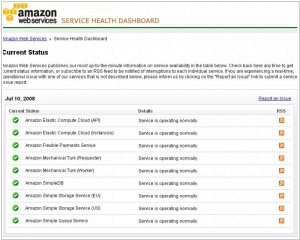
Access a reliable, on-demand infrastructure to power your applications, from hosted internal applications to SaaS offerings. Scale to meet your application demands, whether one server or a large cluster. Leverage scalable database solutions. Utilize cost-effective solutions for storing and retrieving any amount of data, any time, anywhere.
19
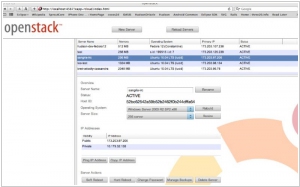
OpenStack is a global collaboration of developers and cloud computing technologists producing the ubiquitous open source cloud computing platform for public and private clouds. The project aims to deliver solutions for all types of clouds by being simple to implement, massively scalable, and feature rich. The technology consists of a series of interrelated projects delivering various components for a cloud infrastructure solution.
Amazon Web Services (AWS) and OpenStack are both cloud computing platforms, but they differ in their origins, scope, and deployment options. AWS is a comprehensive and widely adopted public cloud platform provided by Amazon. It offers a vast range of scalable services for computing power, storage, databases, networking, and more, catering to organizations of all sizes. AWS provides a fully managed, global infrastructure with a pay-as-you-go pricing model. OpenStack, on the other hand, is an open-source cloud computing platform that enables users to build and manage their private or public clouds. It offers a flexible and customizable framework for creating infrastructure-as-a-service (IaaS) environments. OpenStack allows organizations to have full control over their cloud infrastructure but requires more technical expertise for deployment and management.
See also: Top 10 Public Cloud Platforms
See also: Top 10 Public Cloud Platforms
Amazon Web Services vs OpenStack in our news:
2020. AWS launches Amazon AppFlow, its new SaaS integration service
AWS has recently launched Amazon AppFlow, an integration service designed to simplify data transfer between AWS and popular SaaS applications such as Google Analytics, Marketo, Salesforce, ServiceNow, Slack, Snowflake, and Zendesk. Similar to competing services like Microsoft Azure's Power Automate, developers can configure AppFlow to trigger data transfers based on specific events, predetermined schedules, or on-demand requests. Unlike some competitors, AWS positions AppFlow primarily as a data transfer service rather than an automation workflow tool. While the data flow can be bidirectional, AWS's emphasis is on moving data from SaaS applications to other AWS services for further analysis. To facilitate this, AppFlow includes various tools for data transformation as it passes through the service.
2019. AWS launches fully-managed backup service for business
Amazon's cloud platform, AWS, has introduced a new service called Backup, allowing companies to securely back up their data from various AWS services as well as their on-premises applications. For on-premises data backup, businesses can utilize the AWS Storage Gateway. This service enables users to define backup policies and retention periods according to their specific requirements. It includes options such as transferring backups to cold storage for EFS data or deleting them entirely after a specified duration. By default, the data is stored in Amazon S3 buckets. While most of the supported services already offer snapshot creation capabilities (except for EFS file systems), Backup automates this process and adds customizable rules to enhance data protection. Notably, the pricing for Backup aligns with the costs associated with using the snapshot features (except for file system backup, which incurs a per-GB charge).
2017. AWS launched browser-based IDE for cloud developers

Amazon Web Services has introduced a new browser-based Integrated Development Environment (IDE) called AWS Cloud9. While it shares similarities with other IDEs and editors like Sublime Text, AWS emphasizes its collaborative editing capabilities and deep integration into the AWS ecosystem. The IDE includes built-in support for various programming languages such as JavaScript, Python, PHP, and more. Cloud9 also provides pre-installed debugging tools. AWS positions this as the first "cloud native" IDE, although competitors may contest this claim. Regardless, Cloud9 offers seamless integration with AWS, enabling developers to create cloud environments and launch new instances directly from the tool.
2017. AWS introduced per-second billing for EC2 instances

In recent years, several alternative cloud platforms have shifted towards more flexible billing models, primarily adopting per-minute billing. However, AWS is taking it a step further by introducing per-second billing for its Linux-based EC2 instances. This new billing model applies to on-demand, reserved, and spot instances, as well as provisioned storage for EBS volumes. Furthermore, both Amazon EMR and AWS Batch are transitioning to this per-second billing structure. It is important to note that there is a minimum charge of one minute per instance, and this change does not affect Windows machines or certain Linux distributions that have their own separate hourly charges.
2017. AWS offers a virtual machine with over 4TB of memory

Amazon's AWS has introduced its largest EC2 machine yet, the x1e.32xlarge instance, boasting an impressive 4.19TB of RAM. This represents a significant upgrade from the previous largest EC2 instance, which offered just over 2TB of memory. These machines are equipped with quad-socket Intel Xeon processors operating at 2.3 GHz, up to 25 Gbps of network bandwidth, and two 1,920GB SSDs. It is evident that only a select few applications require this level of memory capacity. Consequently, these instances have obtained certification for running SAP's HANA in-memory database and its associated tools, with SAP offering direct support for deploying these applications on these instances. It's worth mentioning that Microsoft Azure's largest memory-optimized machine currently reaches just over 2TB of RAM, while Google's maximum memory capacity caps at 416GB.
2016. Rackspace offers ready-to-use Openstack private clouds
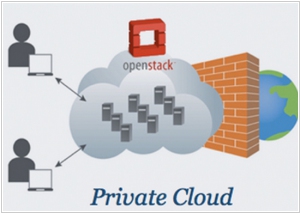
Rackspace has been a long-standing provider of enterprise solutions for managing private OpenStack deployments. However, until now, companies were required to build their own hardware and infrastructure. A significant development now allows enterprises seeking to transition to OpenStack for their private cloud deployments to rely on Rackspace for the complete process, from building and monitoring the infrastructure to managing the OpenStack clouds at every level, including the software stack. Rackspace's expert employees will oversee all aspects of the deployments and assist customers in smoothly transitioning to their new cloud environments. Customers availing this service can expect an impressive 99.99 percent uptime Service Level Agreement (SLA) from Rackspace, although it is important to note that events such as power failures in data centers are beyond the company's control. Rackspace is prepared to install these new private clouds in virtually any data center globally, and it has also partnered with Equinix to expedite and simplify deployments in the data centers operated by the latter.
2015. Google is joining OpenStack
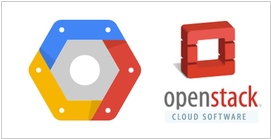
Google has recently become a corporate sponsor of the OpenStack Foundation, demonstrating its commitment to the open-source project. This sponsorship entails an annual contribution of $25,000. Google's focus within the project will revolve around Linux containers, as well as the integration of the Kubernetes container management tool, which was developed by Google, into OpenStack. Notable corporate sponsors of OpenStack include Alcatel-Lucent, Citrix, Comcast, Cray, GoDaddy, Fujitsu, Oracle, SAP, Nokia, and the Linux Foundation. Beyond the financial commitment, Google's involvement signifies a symbolic gesture due to its prior engagement with the project. The company has previously collaborated with OpenStack on various initiatives, such as the Murano application catalog and the Magnum container orchestration service. Google intends to contribute engineering resources to further support the project's advancement.
2014. AWS now supports Docker containers
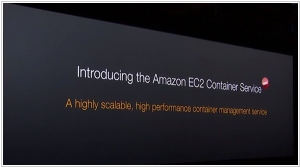
Amazon has announced the preview availability of EC2 Container Services, a new service dedicated to managing Docker containers and enhancing the support for hybrid cloud in Amazon Web Services. This offering brings forth a range of benefits, including streamlined development management, seamless portability across different environments, reduced deployment risks, smoother maintenance and management of application components, and comprehensive interoperability. It is important to note that AWS is not the first cloud provider to provide support for Docker's open-source engine. Google has recently expanded its support for Docker containers through the introduction of its Google Container Engine, which is powered by its own Kubernetes and was announced just last week during the Google Cloud Platform Live event. Furthermore, Microsoft had previously announced its support for Kubernetes in managing Docker containers in Azure back in August.
2014. VMware integrates its cloud management tools with OpenStack
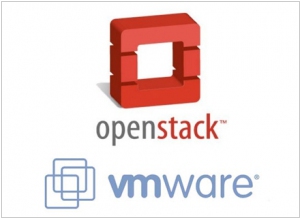
Virtualization giant VMware has announced the integration of its lineup of tools with the OpenStack open-source cloud framework. This new service is scheduled for release in the first half of 2015. With this integration, organizations that have an OpenStack cloud infrastructure in place will have the capability to manage it using VMware's tools through their IT operations staff. Additionally, organizations running data centers and equipment based on the VMware stack will be able to seamlessly synchronize them with other equipment running on OpenStack. It is worth noting that OpenStack was initially developed as an alternative to VMware's private cloud and Amazon's public cloud. VMware's Integrated OpenStack appears to challenge the idea held by OpenStack purists who prefer a private cloud built on multiple open-source components.
2014. Amazon and Microsoft drop cloud prices
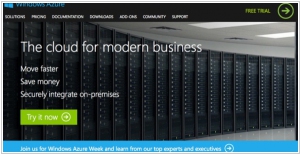
Cloud computing is witnessing a continuous decline in costs. Therefore, if you previously assessed the cost-effectiveness of migrating your IT infrastructure to the cloud and determined it to be expensive, it is worth recalculating now. Cloud platforms have significantly reduced their prices, and another round of reductions is currently underway. Starting tomorrow, the pricing for Amazon S3 cloud storage will decrease by 6-22% (depending on the amount of space used), while the cost of cloud server hard drives (Amazon EBS) will drop by 50%. Additionally, Microsoft's cloud platform, Windows Azure, will lower its prices by 20% a month later to ensure they remain slightly below Amazon's. Given these developments, it's worth reconsidering the need to invest in an in-house server when the cost of cloud services is approaching zero.




